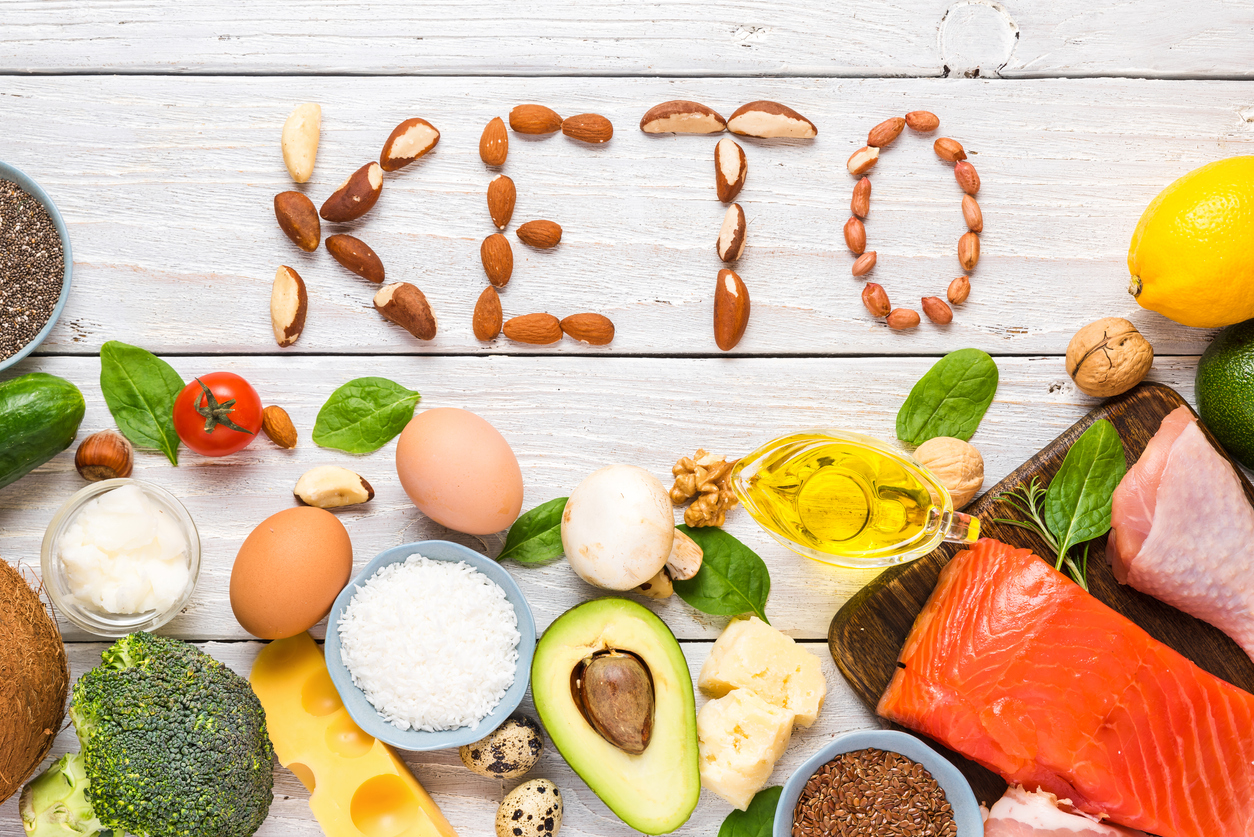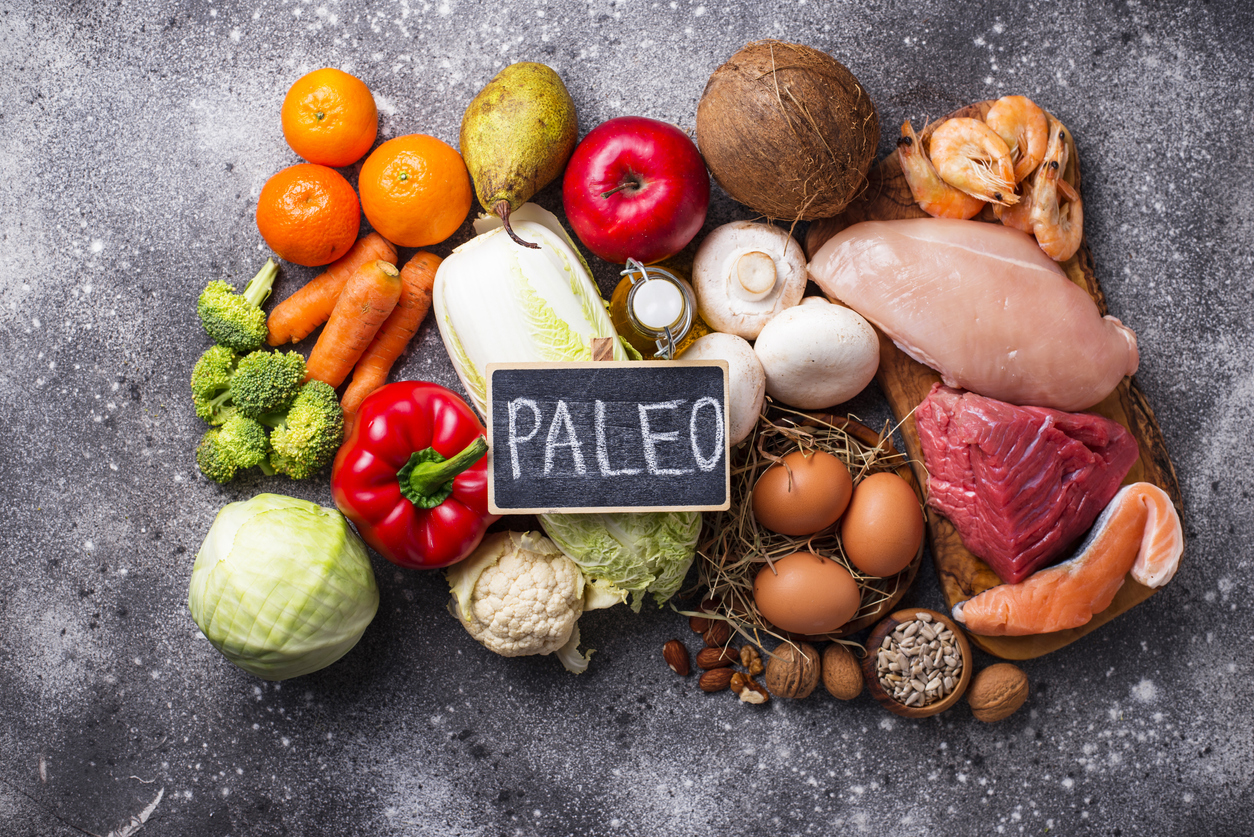A new year seems to always go hand-in-hand with a new diet. Something about the fresh start inspires people to hit reset and embark on a 365-day journey towards their best selves. While any step towards self-improvement is a step in the right direction, problems can occur when people jump on the latest diet bandwagon without doing any research. Just because a particular way of eating works for one person does not mean that it will work for everyone.
Informed choices are smart choices, which may explain why bloggers and podcasters are capitalizing on some of the more popular trends in an attempt to demystify the worlds of high carb, no carb, high fat, low fat, dairy-free, gluten-free, sugar-free, and more. Paleo and Keto diets have spawned a wealth of blogs like The Paleo Mom, Nom Nom Paleo, and Ketogasm, where recipes, tips, and even support are just a click away. But before you throw out everything in your refrigerator or overhaul your pantry, you need to understand the “why” and “how” behind each of these plans to determine which, if either, will fit your lifestyle.
Breaking Down the Basics
Short for Paleolithic, the Paleo diet takes a “hunter/gatherer” approach, which is why some people refer to it as the “Caveman Diet.” The premise is that you eat only those foods that were available to early humans. In other words, think whole foods over processed, and be prepared to break up with dairy, grains, and legumes.
Initially used by physicians in the 1920s to treat epilepsy, the Keto (short for Ketogenic diet) approach is designed to train the body to use fat for energy rather than its favorite source, carbohydrates. This metabolic process, ketosis, is achieved by (you guessed it) cutting nearly all carbs from the daily diet and focusing instead on a combination of high-fat and moderate protein nutritional profile.
The Pros and Cons of Paleo
As mentioned above, the Paleo diet focuses on the foods that were available pre-farming and pre-processing. That means the bulk of the diet is made up of fruits, veggies, nuts, seeds, meat, fish, eggs, spices, herbs, and healthy fats and oils. Paleo proponents point out that the diet offers a myriad of potential health benefits largely due to the decrease in sugar and processed foods and the increase in fruits and vegetables. According to this article in the Natural University of Natural Medicine, vegetables and fiber “are important for gastrointestinal health and overall inflammation levels.” The article goes on to state that early studies have indicated a positive effect on blood glucose and cholesterol levels.
Another Paleo pro is that it encompasses more than just a fixation on food. There is a total lifestyle/wellness component that comes into play. Tracing it back to its origins, hunters and gatherers were always on the move. There was no Netflix binging! The Paleo lifestyle encourages plenty of natural movements like brisk walking or light jogging (preferably outside) and touts strength training over intense cardio. It also emphasizes rest and recovery days, something today’s fitness fanatic tends to overlook.
With a focus on fresh, whole foods and an active, balanced lifestyle, it might be hard to imagine that the Paleo plan has any cons, but there are a few things to consider. For starters, with such an emphasis on meat, some people might use Paleo as an excuse to eat burgers and bacon every day. That can result in too much saturated fat and may lead to higher cholesterol. Wild game is a better, although a more expensive option, which isn’t always feasible for someone on a tight budget. Vegetarians may find the diet doesn’t provide enough protein since legumes, a staple of the vegetarian diet, are eliminated. And some would argue that eliminating grains and dairy may result in nutritional deficiencies. According to medicinenet.com, reducing your intake of dairy and grains may lead to deficiencies in calcium, vitamin D, thiamine, folate, niacin, and riboflavin.
“I think one of the biggest deterrents to Paleo is the lack of whole grains,” says nutritionist and personal trainer Katie Szostak. “I believe people can benefit from whole grains as long as there are no other gut issues in regards to grain digestion.”
The Pros and Cons of Keto

The idea of eating more fat to lose weight appeals to many people, which may explain the popularity of Keto’s low-carb, high-fat approach. For the macro counters, this breaks down into 5% of total calories coming from carbs, 20% of protein, and a whopping 75% from healthy fats, including avocado, oils, and unprocessed nuts. More restrictive than Paleo, Keto does result in weight loss, but it is those restrictions that may make it more challenging to sustain for the long haul. In an article from Northwestern Medicine, Cardiologist Kameswari Maganti says, “The ketogenic diet can be effective for weight loss when used for a short period followed by the adoption of healthier eating habits.” However, he also cautions that it “lends itself to yo-yo dieting, which increases mortality.”
The high-fat content is also concerning. On one hand, foods high in fat take longer to digest, resulting in a more prolonged feeling of satiety and reduced appetite. On the other hand, a diet high in saturated fats is commonly linked to heart disease.
“Not all bodies can process such a high amount of fat in their daily diet,” warns Szostak, who equates it to the once-popular Atkins Diet. “Keto works because it eliminates an entire food group, but that isn’t really a sustainable lifestyle. When carbs are reintroduced, the weight tends to come right back on.”
The Bottom Line

Setting yourself up for success includes being honest with yourself about your lifestyle and what you are willing to do to meet your goals. If you aren’t going to religiously track your macros or you can’t kick your carb cravings, then Keto might not be the best fit. If you can’t live without your daily dairy or aren’t a meat-eater, you might want to pass on Paleo.
At the end of the day, it comes down to understanding your body and what it needs to feel good. Incorporating aspects from both plans, i.e., eating more whole vs. processed foods, reducing sugar intake, getting plenty of fruits and veggies, incorporating healthy fats, and moving your body daily, will result in a healthier lifestyle that is both enjoyable and sustainable.
Final thoughts…
If you’re still struggling to lose weight even after adding more time to your daily and weekly workouts, you might want to consider giving your diet an overhaul. If you’ve considered intermittent fasting but are intimidated by the idea, take a look at Prime Women’s PLATE program, which offers a fantastic program specially designed to help women over 50 jump-start their weight loss.
Now available in an app on Apple or Android with reminders to keep you on track.
Read Next:
How To Stop The Diet Dating Game For Good
Rules for Intermittent Fasting
Where to Buy the Best Workout Clothes
The post Keto vs Paleo: What You Need to Know appeared first on Prime Women | An Online Magazine.









